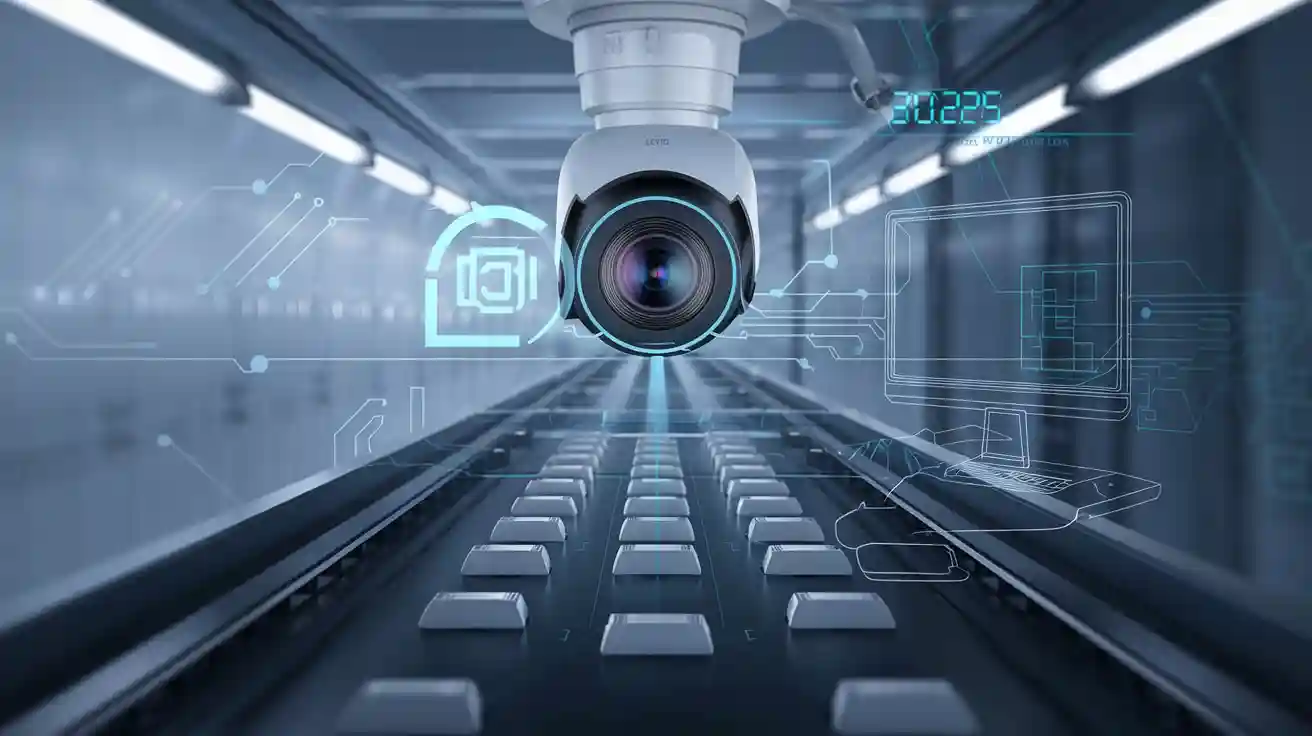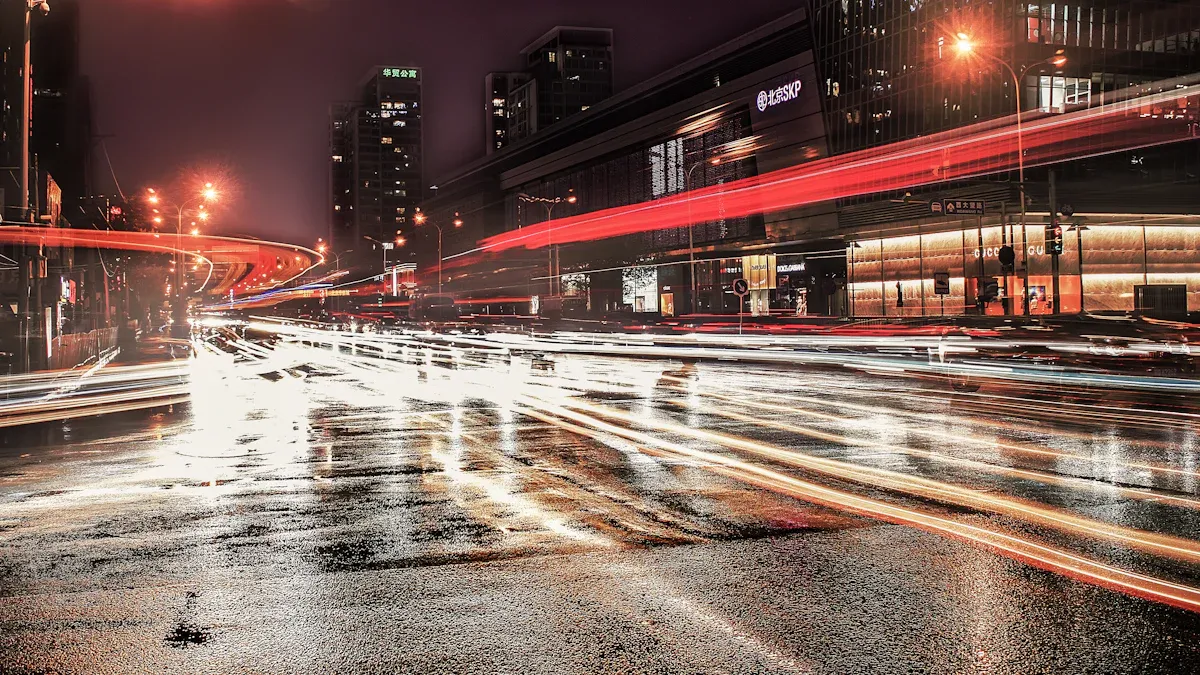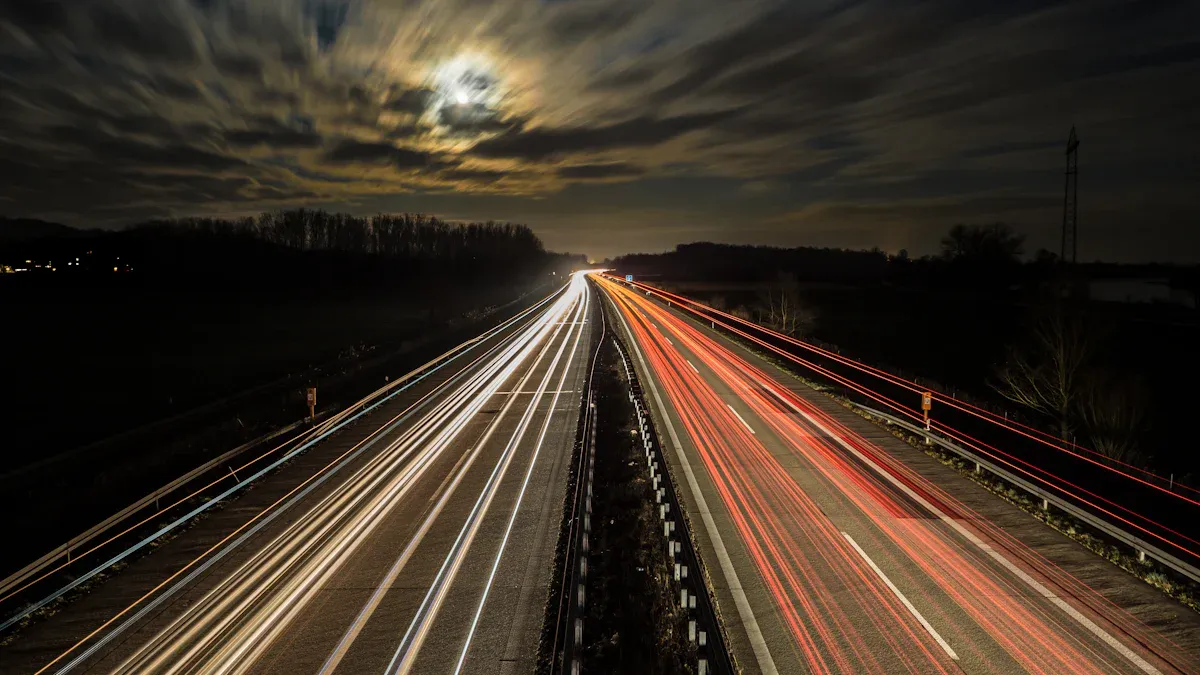
Exposure time in a machine vision system sets how long the sensor collects light during imaging. Measured in milliseconds or seconds, exposure directly controls how much light reaches the sensor, shaping image quality and brightness. When engineers adjust exposure time, they reduce motion blur and improve imaging in fast-moving applications. The right exposure improves system performance and reduces noise, as seen in electric vehicle battery disassembly tasks where optimal exposure leads to better robotic accuracy. In 2025, industries like automotive, electronics, and healthcare rely on exposure time machine vision system settings to meet strict quality and productivity goals.
The table below shows top sectors driving machine vision adoption in 2025:
| Industry / Sector | Adoption Drivers and Trends |
|---|---|
| Automotive | Need for enhanced accuracy and productivity |
| Electronics & Semiconductors | Automated inspection to improve manufacturing quality |
| Healthcare | Regulations and anti-counterfeit measures |
| Logistics | Automated sorting and tracking |
Key Takeaways
- Exposure time controls how long a camera sensor collects light, affecting image brightness and quality.
- Short exposure times reduce motion blur and help capture fast-moving objects but need strong lighting to avoid noise.
- Longer exposure times improve image brightness and detail but can cause motion blur and overexposure.
- Balancing exposure time with lighting, gain, and aperture is key to clear, accurate images in different applications.
- Modern systems use smart, automatic exposure adjustments to keep images sharp and consistent in changing conditions.
Exposure Time Machine Vision System
What Is Exposure Time
Exposure time in a machine vision system refers to the length of time the sensor collects light during imaging. Engineers measure this duration in seconds or milliseconds. The exposure time machine vision system uses can range from as short as 30 microseconds to as long as 500 milliseconds. Most practical applications use values between 0.1 and 20 milliseconds. High-speed inspections, such as those in electronics manufacturing, often require exposure times as short as 100 microseconds. This short duration helps prevent motion blur when objects move quickly. In contrast, slower applications, like static part inspection, may use longer exposure times, sometimes up to 33 milliseconds.
The exposure time directly affects how much light reaches the image sensor. When the sensor collects light for a longer period, the resulting image appears brighter. Shorter exposure times produce darker images but help capture fast-moving objects without blur. The exposure time machine vision system selects depends on the speed of the object, the camera’s resolution, and the field of view. These factors help ensure the image remains sharp and meets the required measurement accuracy.
Why It Matters
Exposure time plays a critical role in the performance of any exposure time machine vision system. The amount of light collected during imaging determines image quality, brightness, and the ability to detect small details. If the exposure is too long, the image sensor may overheat, which increases noise and reduces detection accuracy. Shorter exposure times, especially when paired with high-brightness lighting, help minimize noise and improve the clarity of the image.
Ambient lighting conditions also influence the choice of exposure time. Variable or unwanted light from the environment can reduce image quality. To counter this, engineers often shorten exposure time and increase the intensity of the system’s own lighting. This approach helps maintain consistent imaging results, even when ambient light changes. In some systems, pulsed lighting synchronized with the camera’s exposure further improves image quality, especially for fast-moving objects. Closed-loop feedback systems can automatically adjust lighting intensity based on the brightness detected by the camera, ensuring stable imaging performance.
Tip: Always balance exposure time and lighting intensity. Too much exposure can wash out details, while too little can create shadows or dark images.
The exposure time machine vision system chooses must support the application’s needs. For example, in high-speed production lines, short exposure times prevent motion blur and maintain sharp images. In slower processes, longer exposure times can improve brightness and reveal more detail. By carefully selecting and adjusting exposure time, engineers ensure the system captures clear, accurate images for reliable inspection and measurement.
Technical Fundamentals
How Exposure Time Works
Exposure time sets how long a camera sensor collects light during imaging. This period works closely with other camera settings, such as gain, iris aperture, and frame rate. When engineers use strobe lighting, they match the exposure time to the light pulse. This step helps freeze motion and makes the image brighter. If the iris aperture is small, less light enters the lens. To keep the exposure balanced, engineers may increase exposure time or boost the gain. However, longer exposure time can cause motion blur, while higher gain can add noise. The frame rate also links to exposure time. Higher frame rates need shorter exposure times, which means less light reaches the sensor. To keep imaging clear, engineers often use stronger lighting or adjust the region of interest.
Key Parameters
Several key parameters affect exposure control in machine vision. These include exposure time, gain, aperture size, and frame rate. Each parameter changes how much light the sensor collects. For example, a smaller aperture needs either more exposure time or higher gain to keep the image bright. However, longer exposure time can blur moving objects. Engineers must balance these settings to get the best imaging results. They also watch for overexposure, which happens when the sensor gets too much light. Overexposure can cause bright spots and loss of detail in the image. In machine vision, this can lead to errors in detecting features or measuring parts.
Note: Overexposure can make some areas of the image look flat or colorless. Advanced exposure control methods, like adaptive illumination, help prevent this problem.
Physics of Exposure
The physics behind exposure time explains how it affects imaging. When exposure time increases, the sensor collects more light, which boosts the signal. This improves the signal-to-noise ratio, but only up to a point. Doubling the exposure time does not double the signal-to-noise ratio. Instead, it increases by about 1.4 times. Longer exposure time also raises the risk of thermal noise and fixed pattern noise. Engineers use cooling and careful exposure control to manage these effects. In 2025, predictive exposure control uses smart algorithms to adjust exposure time in real time. These systems help keep imaging stable, even when lighting or object speed changes quickly.
Exposure Time Effects

Motion Blur and Noise
Exposure time plays a major role in motion blur, especially in high-speed imaging. When the sensor collects light for a longer period, moving objects appear smeared. The sensor records light from several positions as the object moves, which causes blur. Shorter exposure times help reduce this effect, but they require stronger lighting to keep the image bright. Motion blur can hide small details, cause measurement errors, and lower inspection accuracy in industrial imaging.
- Longer exposure time increases motion blur.
- Shorter exposure time reduces blur but may increase noise if lighting is not strong enough.
- Motion blur affects tasks like object detection and optical character recognition (OCR), especially for small targets.
| Aspect | Explanation |
|---|---|
| Motion blur vs. exposure time | Longer exposure allows more motion, increasing blur. |
| SNR (Signal-to-Noise Ratio) | SNR improves with longer exposure, but so does blur. |
| Overexposure risk | Longer exposure can saturate pixels and lose details. |
To minimize blur, engineers often set exposure time so that object movement during imaging is less than one pixel. For example, if an object moves at 200 mm/sec and the system has a resolution of 4.26 pixels/mm, the ideal exposure time is about 0.58 milliseconds. This setting helps keep images sharp and accurate.
Image Quality Issues
Exposure time also affects noise and dynamic range in imaging. When exposure increases, the sensor collects more photons, which can improve the signal-to-noise ratio. However, longer exposure can also raise thermal noise and risk overexposure, which reduces image quality. In scientific cameras, photon noise dominates when the exposure allows enough photons to be detected. Pixel binning can help reduce required exposure time while keeping noise low, but it may lower resolution.
Dynamic range depends on exposure time. Short exposure times limit photon capture, making it hard to see details in dark areas. Longer exposure times brighten the image but can cause overexposure in bright spots. High dynamic range (HDR) techniques combine images taken at different exposures to capture both shadows and highlights. These methods help maintain image quality across different lighting conditions.
Tip: Adjust exposure time to balance brightness, noise, and motion blur for the best imaging results.
Optimizing Exposure Time

Application Trade-Offs
Selecting the right exposure time in machine vision systems requires careful consideration of the task. Inspection, measurement, and tracking each present unique challenges. Shorter exposure times help reduce motion blur, which is important for tracking fast-moving objects or parts on a conveyor. However, shorter exposure times also decrease image brightness and lower the signal-to-noise ratio. This can make it harder to spot small defects or measure tiny features, especially in medical imaging or fluorescent imaging tasks.
Longer exposure times improve sensitivity and image quality. They allow the sensor to collect more light, which helps in applications like fluorescent imaging or when working with dim fluorescent signals in medical imaging. However, longer exposure times increase the risk of motion blur. This can cause problems in high-speed inspection or when tracking moving targets. Engineers must also consider frame rate, sensor type, and lighting. Advanced sensor modes, such as Sony’s Dual-Speed Streaming, can help reduce motion blur without needing a global shutter sensor. The choice of exposure time must balance these factors to match the speed of the application, the lighting conditions, and the required image quality.
Tip: For medical imaging, especially when using fluorescent or fluorescent imaging techniques, always test different exposure settings to find the best balance between clarity and speed.
Best Practices 2025
In 2025, best practices for exposure optimization focus on dynamic and predictive adjustment. Modern machine vision systems use smart algorithms to automatically adjust exposure time in response to changing scene brightness. The process starts with the system capturing an image at a standard exposure and gain setting. The system then analyzes the image histogram, comparing the mean and variance to a target brightness level. If the image is too dark or too bright, the system adjusts exposure time or gain to bring the brightness closer to the target.
Engineers can choose between gain priority and exposure priority modes. Gain priority keeps noise low by adjusting exposure time first. Exposure priority keeps exposure time short to freeze motion, adjusting gain as needed. Lighting compensation features, such as backlight or frontlight modes, help the system adapt to uneven lighting. Metering modes, like spot or partial metering, further improve adaptation in complex scenes. Feedback loops allow the system to optimize exposure settings automatically, without needing manual intervention.
The main challenges in optimizing exposure time include slow feedback control, lighting variations, and hardware limitations. Traditional feedback methods often require many image samples, which slows down adaptation. Rapid lighting changes can cause delays in camera response. Prediction-based methods depend on image quality and scene context, which may not always be reliable. Saturation problems can occur if the camera only updates parameters after saturation happens. Limited dynamic range and hardware constraints can also lead to over- or under-exposed frames, especially during fast lighting changes. Motion artifacts and scene variability can degrade the performance of exposure control methods. Engineers must address these challenges to achieve rapid, accurate, and robust exposure optimization.
| Challenge | Impact on Exposure Optimization |
|---|---|
| Slow feedback control | Delays in adapting to new scenes |
| Lighting variations | Inconsistent image quality |
| Hardware limitations | Over- or under-exposed frames |
| Motion artifacts | Reduced accuracy in moving scenes |
| Scene variability | Unreliable exposure adjustments |
Note: Consistent exposure settings help maintain stable image quality, which is critical for defect detection in automated inspection systems. Stable imaging allows algorithms to spot defects accurately and reduces the need for manual re-inspection.
Balancing brightness, motion blur, and noise involves adjusting the exposure triangle: shutter speed (exposure time), aperture, and ISO (gain). Shutter speed controls how long the sensor collects light, directly affecting both brightness and motion blur. Longer shutter speeds increase brightness but also motion blur. Shorter shutter speeds freeze motion but require higher ISO or a wider aperture to keep the image bright. Engineers often start with a desired aperture for depth of field and a base ISO, then adjust shutter speed to achieve proper exposure. Fine-tuning ISO and aperture helps manage noise and motion blur. Using exposure stops helps quantify changes and avoid guesswork. In medical imaging, especially with fluorescent or fluorescent imaging, experimentation is key to finding the right balance for each scene.
Actionable Steps for Optimizing Exposure Time:
- Define the application’s main goal (inspection, measurement, tracking, or medical imaging).
- Set the initial aperture and ISO based on lighting and depth of field needs.
- Adjust exposure time to achieve the desired brightness and minimize motion blur.
- Use histogram analysis to check image quality and adjust settings as needed.
- Employ dynamic or predictive exposure control for changing scenes.
- Test and refine settings, especially for fluorescent and medical imaging tasks.
- Use a tripod or stable mount for slow shutter speeds to avoid camera shake.
⚡ Pro Tip: In high-speed production, synchronize image acquisition with triggers to minimize motion blur and misalignment. This step ensures consistent imaging and improves defect detection rates.
Exposure time shapes image quality and system performance in machine vision. Recent advances, such as neuromorphic exposure control and event-based sensors, help systems adapt quickly to changing light. Professionals should use real-time, bio-inspired algorithms for robust image acquisition. Key recommendations include integrating event-based sensors, focusing on dynamic adaptation, and joining professional networks. Staying informed about new exposure technologies and best practices ensures reliable results in 2025.
FAQ
What is the best way to set exposure time in a machine vision system?
Engineers start by testing different exposure times. They check image brightness and sharpness. They use tools like histograms to help. The right setting depends on object speed, lighting, and the goal of image acquisition.
How does exposure time affect motion blur?
Longer exposure times make moving objects look blurry. Shorter exposure times help freeze motion. Engineers choose the shortest time that still gives a bright image. This helps keep details clear during image acquisition.
Can automatic exposure control help in changing lighting conditions?
Yes. Automatic exposure control adjusts settings when lighting changes. The system checks each image and changes exposure time as needed. This keeps image acquisition stable and reliable.
Why do some applications need very short exposure times?
Fast-moving parts or objects need short exposure times. This prevents blur and keeps images sharp. High-speed image acquisition often uses strong lighting to help the sensor capture enough detail quickly.
Does exposure time affect image noise?
Yes. Short exposure times can increase noise because the sensor collects less light. Longer times reduce noise but may cause blur. Engineers balance exposure time and lighting to get the best image acquisition results.
See Also
A Comprehensive Overview Of Inspection Vision Systems In 2025
An In-Depth Look At Image Processing In Vision Systems
How Cameras Function Within Machine Vision Systems Today
Exploring The Field Of View In Vision Systems 2025
Essential Guide To Semiconductor Applications In Vision Systems








